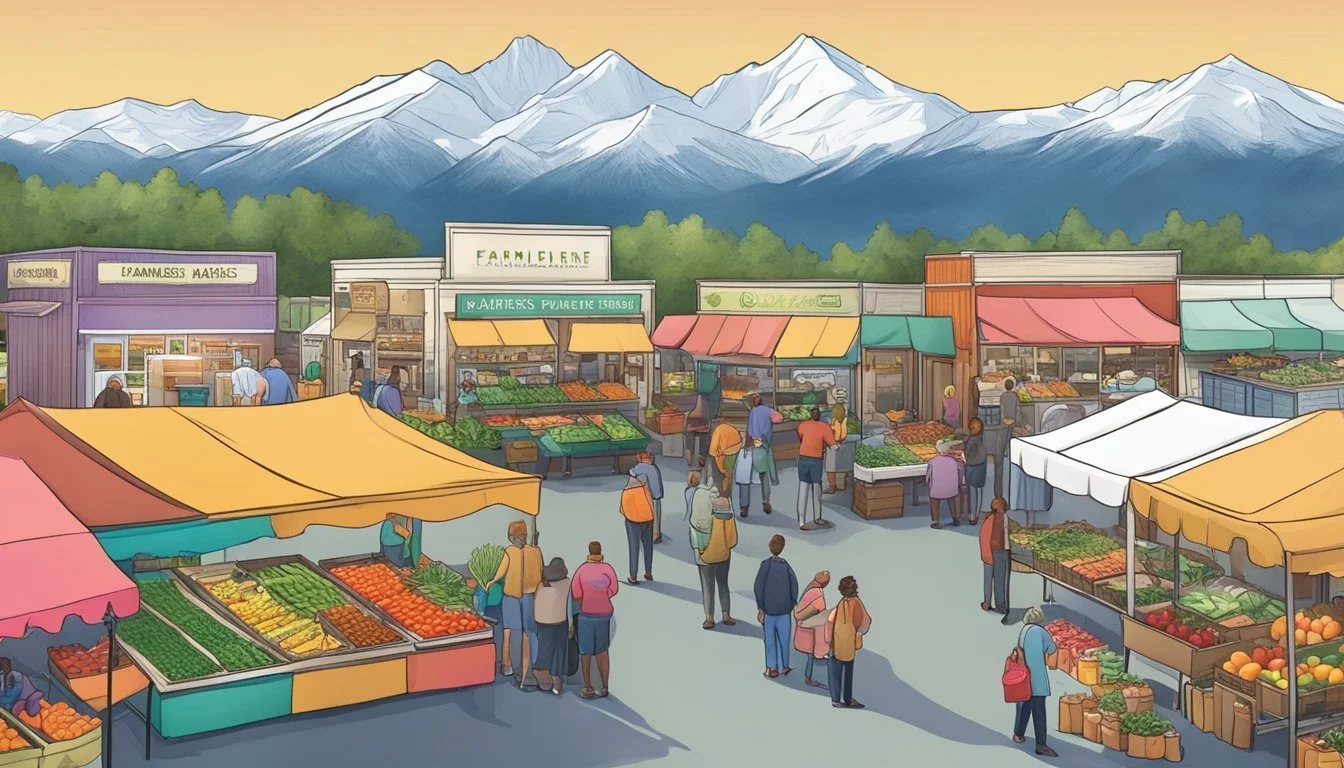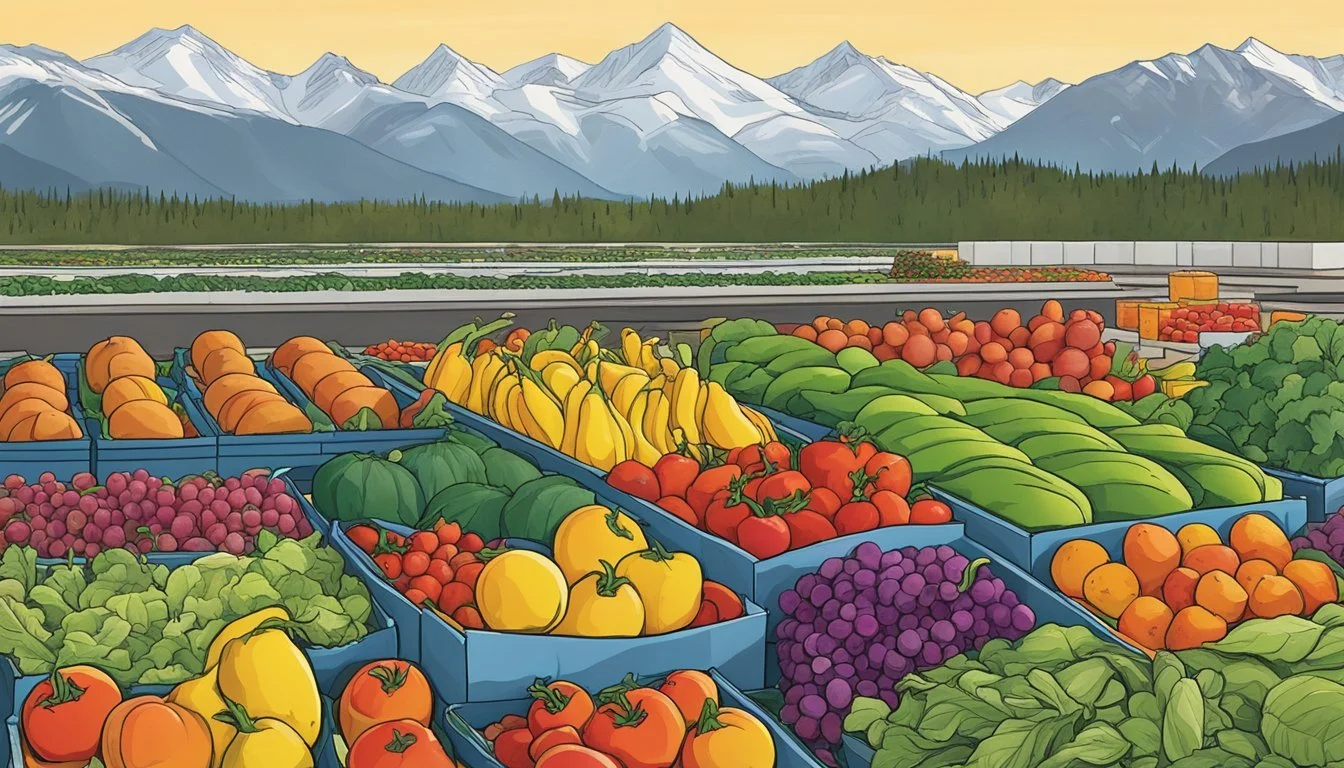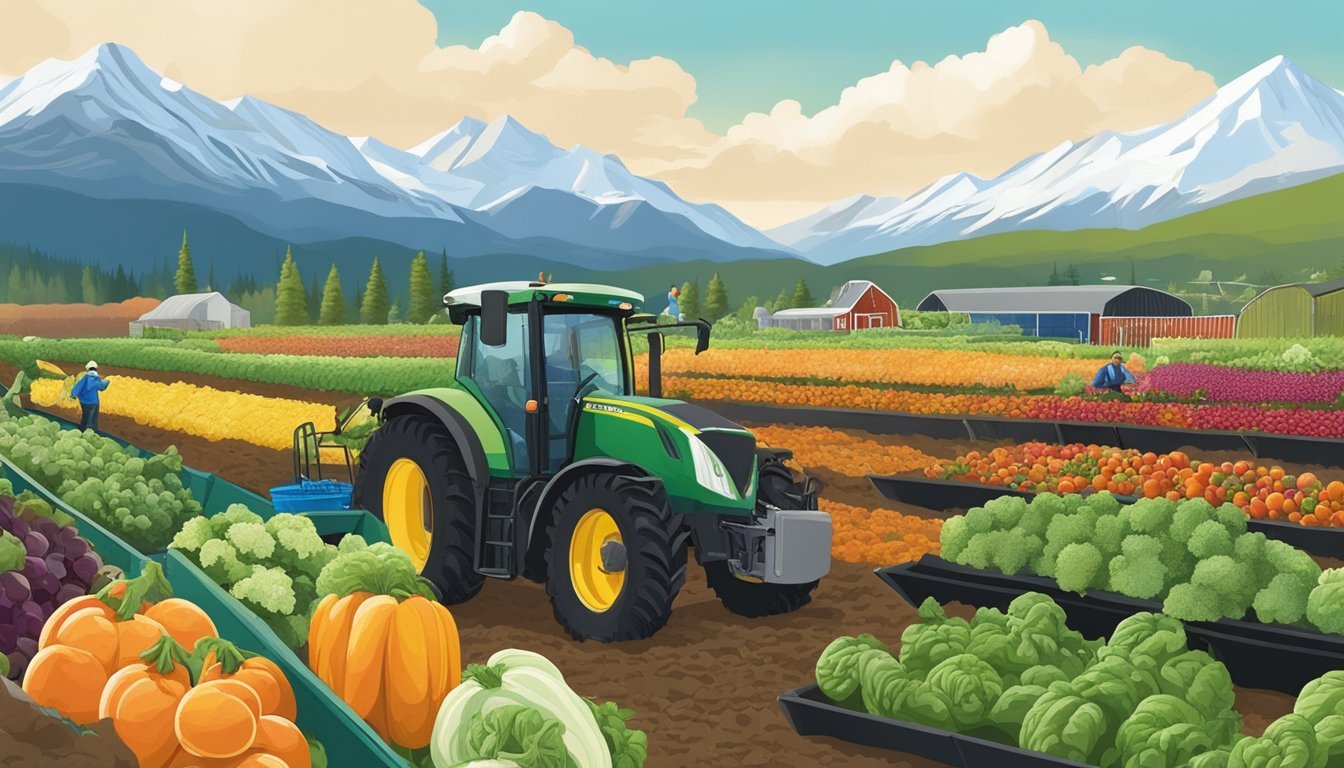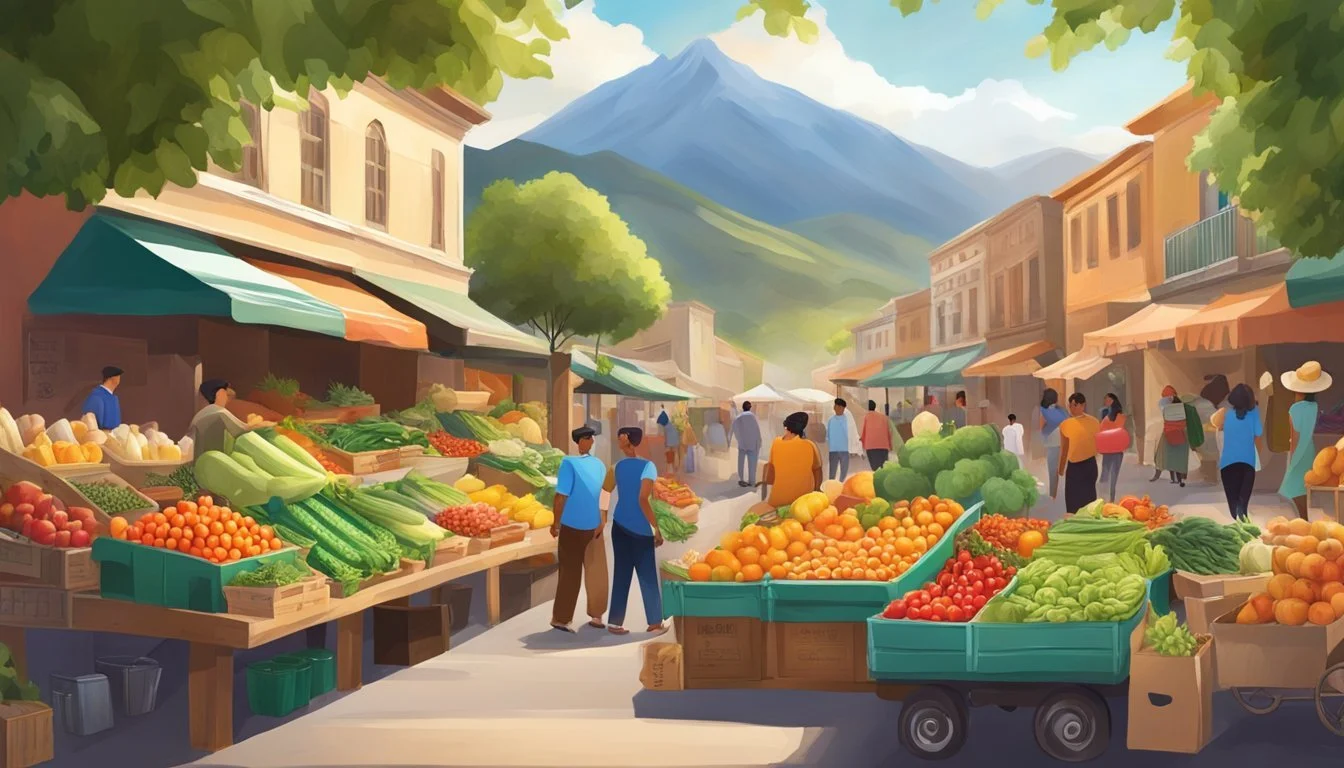Community Supported Agriculture (CSA) in Anchorage, AK
A Guide to Local Produce Subscriptions
Community Supported Agriculture (CSA) represents a growing movement in Anchorage, AK, where the framework of local food systems is reimagined through a partnership between residents and farmers. This agricultural model is built upon the premise of mutual support, with customers purchasing "shares" of a farm's harvest in advance. In return, they receive a regular distribution of fresh, locally-grown produce during the farming season. This system not only encourages sustainable agriculture by providing capital to farmers at a critical time, but it also fosters a closer relationship between growers and the community, raising awareness about the sources of their food.
Anchorage has embraced this concept, and a number of CSA programs are now operating within the area. These programs offer locals a tangible way to invest in their regional food security while enjoying the benefits of nutritionally rich, seasonal produce that hasn't traveled thousands of miles. By directly supporting these farms, members of a CSA help to ensure that Anchorage's local food landscape remains vibrant and robust.
For both farmers and consumers in Anchorage, the CSA model underpins more than just an economic transaction—it embodies a commitment to environmental stewardship, community engagement, and the well-being of future generations. Through this system, Anchorage's local food systems are strengthened, as consumers become active participants in the journey from seed to table, contributing to a sustainable community food ecosystem.
Understanding CSA
Community Supported Agriculture represents a key initiative in fostering sustainable local food production. It is a model that directly connects producers and consumers within the community, emphasizing mutual support and benefit.
Defining Community Supported Agriculture
Community Supported Agriculture (CSA) is a farming model where consumers buy memberships or shares in a farm's upcoming harvest. These prepaid shares provide the capital necessary for farmers to plan the season, purchase seed, and cover early operational costs. In return, members typically receive a weekly or bi-weekly bundle of fresh produce, including a variety of vegetables and sometimes other farm products.
History of the CSA Movement
The CSA movement began in the 1960s in Germany, Switzerland, and Japan as a response to food safety issues and urbanization's threat to local farms. It reached the United States in 1986 and has since spread, supporting sustainable agricultural practices and the local food economy. Originally founded on the east coast on just two small farms, it was conceived to lessen the financial burdens on farmers, allowing them to focus on sustainable agriculture and soil health.
CSA Model and Structure
CSA operates on a shared-risk, shared-reward framework. Members usually pay up front for a season's worth of vegetables, which they then receive on a regular schedule. This structure can vary, with some farms offering customizable shares or additional products like eggs, meats, or dairy.
Payment: Paid in advance by members.
Distribution: Regularly scheduled, typically weekly.
Contents: Seasonal produce and other farm products.
The CSA model inherently promotes sustainable agriculture and local food production by providing farmers with a direct market for their crops and giving consumers access to fresh, local produce. It is a movement that continues to grow, allowing communities to support their local farmers and fostering a more sustainable food system.
Benefits of Joining a CSA
Joining a CSA in Anchorage, AK offers multiple advantages that enhance food security, bolster the local economy, and contribute to sustainable food systems.
For Members
Members of a CSA enjoy access to a variety of fresh produce, often including vegetables, fruits, and other farm products. This direct-to-consumer model ensures that households receive:
A regular supply of fresh, locally-grown food, which can contribute to improved food security by reducing reliance on distant food systems.
The opportunity to try new food items and recipes, enhancing their culinary experience and increasing dietary diversity.
For Farmers
For farmers, participating in a CSA model provides:
A stable income stream through upfront payments for CSA shares, helping to reduce financial uncertainty.
The ability to plan production more effectively, knowing the amount of produce they need to grow to meet the demand of their community.
For the Community
The community at large benefits from the CSA model through:
Community-building activities, as CSAs often involve member participation in farm events or volunteer opportunities.
Contributing to a more resilient local economy by keeping food dollars circulating within the community.
Supporting the development of more sustainable food systems that can reduce carbon footprints and promote ecological farming practices.
CSA Programs in Anchorage
Community Supported Agriculture (CSA) programs in Anchorage offer residents a way to directly engage with local food systems, gaining access to fresh, seasonal produce while supporting nearby farms.
Sun Circle Farm
Situated within driving distance of Anchorage, Sun Circle Farm has cultivated a reputation for connecting with the community through its CSA program. Members signing up for this program can pick up their shares of fresh produce at designated locations in Palmer, Wasilla, and Anchorage, ensuring accessible distribution points throughout the region.
Pickup Locations: Palmer, Wasilla, Anchorage
Contact: 907.745.7406
Website: www.suncirclefarm.com
Spring Creek Farm
Spring Creek Farm, associated with Alaska Pacific University, provides a CSA program that emphasizes affordability and accessibility in local produce. Their farm fosters a strong community bond among CSA members, who regularly receive a share of the bountiful harvest. Detailed information regarding the CSA subscription can be found in their annual CSA Brochure.
Brochure Available: CSA Brochure 2024
Focus: Healthy, local produce with a community-oriented approach
Seasonal Varieties and Produce Offerings
Community Supported Agriculture in Anchorage, AK, offers a distinct selection of fresh, locally-sourced produce that varies with the seasons. Members receive a weekly share of this produce, ensuring they get the freshest, most nutritious offerings.
Typical Seasonal Produce
Anchorage's summer harvest brings a variety of vegetables such as kale, lettuce, and root vegetables like beets and carrots. The season dictates the availability of these items, with a timeline generally spanning from May through October. Expect spring to introduce tender greens, while the fall offers a bounty of squashes and tubers.
Spring: radishes, peas, greens
Summer: zucchini, broccoli, berries
Fall: pumpkins, potatoes, cabbages
Beyond Vegetables
While vegetables are the cornerstone of most CSAs, Anchorage's programs often extend to other farm products. Eggs, dairy, and a selection of cheese are common additions. These items are typically available year-round, bringing variety to the weekly shares and supporting a more rounded local diet.
Eggs: Available from farms raising chickens; varies in quantity.
Dairy: Includes milk and sometimes yogurt produced locally.
Cheese: Small-batch cheese curds, often from regional dairies.
Supporting Sustainability Through CSA
Community Supported Agriculture (CSA) programs in Anchorage, AK, exemplify a commitment to sustainability. They directly address environmental concerns and promote sustainable methods in food production.
Environmental Benefits
CSAs in Anchorage contribute to environmental protection through several straightforward measures:
Reduced Carbon Footprint: By localizing the food supply chain, CSAs cut down on the emissions associated with long-distance transportation of food products.
Supporting Biodiversity: They help maintain a diverse ecosystem by encouraging the growth of a variety of plant species and using crop rotation practices.
Sustainable Food Production
Community Supported Agriculture fosters sustainable food production with two main practices:
Organic Farming: Many CSA farms in Anchorage adopt organic farming practices, which eliminate the use of synthetic pesticides and fertilizers, reducing soil and water contamination.
Resource-Efficient Farming: CSAs often employ farming techniques that conserve water and improve soil quality, demonstrating a responsible stewardship of natural resources.
Joining a CSA in Anchorage
Community Supported Agriculture (CSA) in Anchorage offers residents a chance to support local farms by becoming members and receiving a share of the harvest. It aligns with commitments to fresh, local produce and establishes a community-centric food system.
How to Become a Member
Individuals interested in joining a CSA in Anchorage can start by identifying local farms offering CSA programs. Contact information and sign-up details are generally available on farm websites or through farmers market representatives. Members typically register in the early spring, paying upfront for the season. This initial investment supports the farms during their key planning and planting phase.
Steps to Membership:
Research local farms with CSA programs.
Contact the farm directly or visit a farmers market for details.
Complete the registration process with payment to secure a share.
Understanding Your Share
A CSA share gives members weekly or bi-weekly distributions of the farm's produce throughout the growing season. The contents are based on what is seasonal and ready for harvest, fostering an understanding of local food cycles. Members might also receive newsletters with updates, recipes, or invitations to farm events.
CSA Share Composition:
Vegetables: An assortment of fresh, locally grown vegetables comprising the bulk of the share.
Extras: Depending on the farm, shares may include herbs, flowers, or other farm products.
Members can typically pick up their shares at designated locations, such as the farm itself or a local farmers market. It is crucial for individuals to adhere to pick-up schedules and be flexible with the assortment of produce they receive, as nature's variability is a defining characteristic of CSA programs.
Challenges and Considerations
Community Supported Agriculture (CSA) in Anchorage faces a unique set of challenges and considerations that impact both members and farmers. These challenges must be carefully managed to ensure the resilience and sustainability of local food production.
Potential Risks for Members
Members who subscribe to CSA programs undertake certain risks. Food production is inherently dependent on variables such as weather and pest pressures, which can lead to fluctuations in the types and quantities of produce available. For instance:
A harsh winter or a late frost could significantly diminish crop yields, resulting in smaller distributions for members.
Unexpected agricultural challenges, like the appearance of a new pest, can potentially reduce the diversity of the CSA shares.
Moreover, the involvement in a CSA ties members to the fortunes of a single farm, contrasting with the diversified sources of a typical grocery store.
Sustainability Challenges for Farmers
Farmers who operate CSAs face sustainability challenges that span environmental, economic, and social aspects. They must balance the demands of food chain dynamics while upholding the principles of CSA, which emphasize direct, local food systems. Some specific challenges include:
Ensuring soil health and biodiversity on the farm to maintain productivity in the face of climate extremes, which Alaska's environment can present.
Managing the economics of a small farm, which involves securing enough members to make the CSA model financially viable, all while contending with larger, more industrial competitors.
Furthermore, CSA farmers in Anchorage must build and maintain strong community ties to foster the local support necessary for their long-term resilience. Addressing these factors is critical to the successful operation of CSAs in America, particularly in regions like Anchorage with harsher growing conditions.
The Role of CSA in Anchorage’s Larger Food Ecosystem
In Anchorage, Community Supported Agriculture (CSA) forms a vital part of the city's food ecosystem, offering a direct market approach that maintains local food systems and promotes agroecology.
Alternative Food Networks
Community Supported Agriculture (CSA) in Anchorage acts not only as a business model but also as a burgeoning alternative food network. By connecting consumers directly with growers, CSAs bypass traditional food supply chains, leading to a smaller carbon footprint due to reduced transportation distances. Anchorage's CSA programs, such as Spring Creek Farm CSA, enable participants to invest in local seed varieties well-suited for the Alaskan climate, enhancing genetic diversity and fostering entrepreneurship.
Building Food Resilience
Resilience in Anchorage’s food ecosystem is considerably strengthened through CSA initiatives. Members' upfront investments in local farms yield seasonal produce, ensuring a guaranteed market for farmers and reducing uncertainty. This practice empowers local farmers to focus on agroecological practices that enrich soil health and mitigate climate impacts. In turn, Anchorage’s citizens benefit from enhanced food entitlement, reinforcing their access to fresh, local produce amidst global market fluctuations.
CSA Member Experiences
Community Supported Agriculture (CSA) in Anchorage, AK, offers an immersive and fulfilling experience for its members. They not only receive fresh, locally-produced food but also engage in a process that fosters community spirit and connection.
Testimonials and Stories
CSA members often express a deep sense of satisfaction with their participation. "It's more than just getting vegetables; it's about supporting local families and getting involved in the lifecycle of our food," says a member from the Spring Creek Farm CSA. Another member recounts, "Picking up my share every week feels like a treasure hunt, I never know what surprise awaits, but it's always delightful." These experiences highlight the direct connection consumers feel with their food and the land it comes from.
Direct Connection: Members feel directly tied to the farming process, often forming emotional bonds with the produce and the people who grow it.
Community Building: Sharing recipes and stories during pickup days creates a tight-knit community atmosphere.
Creating a Community Connection
CSA programs in Anchorage do more than provide food; they cultivate a common ground for individuals to contribute to community resilience. One member notes, "Joining the CSA felt like being part of a larger movement, one that's helping to build a stronger, more sustainable Anchorage." Through events and shared experiences, members influence one another and build a network of support that extends beyond the farm.
Community Engagement: Events such as potlucks and volunteer days strengthen the bond between members and their commitment to local food systems.
Educational Impact: Guided gardening sessions and farm visits educate members about agriculture, further enriching their experience.
Future of CSA in Anchorage and America
Community Supported Agriculture in Anchorage is posited for expansion, which mirrors a trend observable across the United States. This projection aligns with a growing interest in sustainable agriculture and a bolstered local economy.
Trends and Growth
Nationwide, consumers are increasingly valuing the origin and production methods of their food, leading to a steady rise in the number of CSA farms. Anchorage, specifically, reflects this upsurge with local farms, such as Spring Creek Farm, engaging more community members each year. Accessible pricing and community engagement are key factors behind this growth. In America, the CSA model is progressively seen as a cornerstone for regional food security and a thriving local economy, indicating a healthy forecast for CSA's prominence in both rural and urban settings.
Innovation in the CSA Model
Innovation within the CSA model is taking shape in various forms to meet contemporary needs. Farms are beginning to integrate technology for efficiency in subscription management and distribution, enhancing customer experience and operational fluidity. Anchorage's CSA programs may soon offer more diverse subscription options, including customizable shares or add-ons like locally produced honey, cheese, or eggs. The CSA model in America is evolving beyond mere transactions, fostering community through events, farm visits, and educational programs, thereby reinforcing the bond between the local economy and sustainable agriculture.











